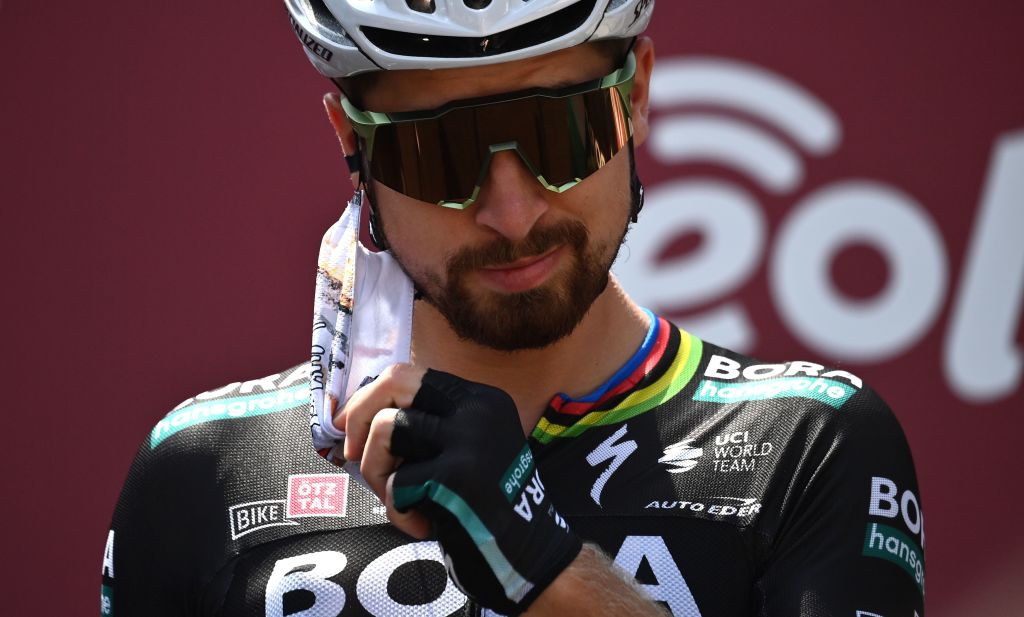Peter Sagan sees his Milan-San Remo glass half full after another fourth place
'Second in the sprint behind the attack of Van Aert and Alaphilippe is not something to regret'

Peter Sagan (Bora-Hansgrohe) had to find satisfaction in yet another placing a Milan-San Remo but seemed genuinely content with fourth place after an opaque return to racing at Strade Bianche and the knowledge and obligations of a compact rescheduled 2020 season that includes both the Tour de France and the Giro d'Italia.
Sagan was riding his tenth Milan-San Remo and still chasing his first victory. He has never finished outside of the top 20 but has finished second twice and now fourth four times.
"I finished second in the sprint behind the attack of Van Aert and Alaphilippe, so I have to be happy about that, it's not something to regret. I think I did the very best I could in this race," Sagan said, seeing his Milan-San Remo glass half full rather than half empty.
"Wout van Aert is a talented young guy; he's got a great future ahead of him. He had a terrible injury at the Tour de France but he showed he's back, so I'm happy for him."
Sagan openly admitted he did not have the power and form to go with Alaphilippe's big-gear attack on the Poggio, explaining why.
"I'm not in as a good condition as in previous years but I'm getting better and better. My season starts in earnest at the Tour de France, so I think on the right road," he suggested.
"But I honestly didn't feel I could go after the attack when Alaphilippe went on the Poggio. Then after, if there'd been one or two more riders we could have caught them. But we eased up with 700 metres to go and that helped them gain space again."
Get The Leadout Newsletter
The latest race content, interviews, features, reviews and expert buying guides, direct to your inbox!
Sagan did not seem impressed by the new inland race route, put in place after several mayors of towns on the Ligurian coast refused to host the race.
"It was a very hot Milan-San Remo and even a bit longer than usual but it was perhaps more relaxed than previous years," he suggested.
"The race only really started to be stressful after the Colle di Nava. Then the Cipressa and the Poggio flew by in an instant. It was a more logical, almost easier race on the new route. The usual road from Genoa and then the Capi is more rolling with more changes in pace."
Questions were logically asked about Daniel Oss' solo attack on the descent of the Cipressa and on the flat coast road to the Poggio. He could have been useful in the finale, perhaps to help chase the Poggio attacks for Sagan. But race tactics come much easier from the armchair.
In truth, Oss probably wouldn't have survived the high pace on the Poggio after working earlier on the Cipressa. Only team leaders were left in the 23-rider group that finished two seconds behind Van Aert and Alaphilippe.
"I think Daniel was left out front and so kept going with the little energy he had left after working hard on the Cipressa. There's was nothing much we could do…" Sagan said, accepting another defeat

Stephen is one of the most experienced member of the Cyclingnews team, having reported on professional cycling since 1994. He has been Head of News at Cyclingnews since 2022, before which he held the position of European editor since 2012 and previously worked for Reuters, Shift Active Media, and CyclingWeekly, among other publications.